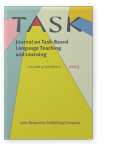Vol. 3:2 (2023) ► pp.243–272
From sci-fi to the classroom
Implications of AI in task-based writing
With the release of ChatGPT, the use of AI in language teaching has become an issue that we cannot ignore. In this commentary, we argue that AI tools, including ChatGPT, are now among the digital resources available to students and teachers. We therefore need to be aware of the challenges and affordances of their uses in teaching and learning and that helping students understand these issues is part of the language teacher’s role in promoting digital literacy. We first discuss the history of AI in teaching writing and then highlight three issues related to its use: authorship, authenticity and accuracy, and digital literacies. Next, we provide examples of three tasks illustrating how AI can be used to promote language learning, genre awareness, and digital literacy. We conclude by suggesting some areas for further exploration.
Article outline
- Defining the territory: Task, genre, and second language writing
- AI and teaching L2 writing
- Concerns about AI
- Authorship
- Accuracy and authenticity
- Digital literacy and working with AI
- Three approaches to using AI
- Writing to learn language
- Learning to write specific genres
- Learning to write with AI
- Looking ahead
-
References
